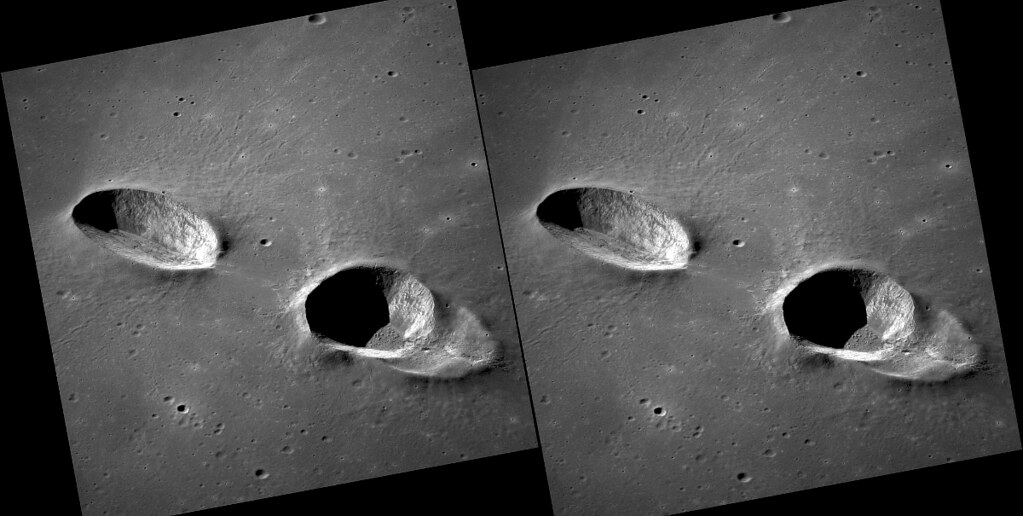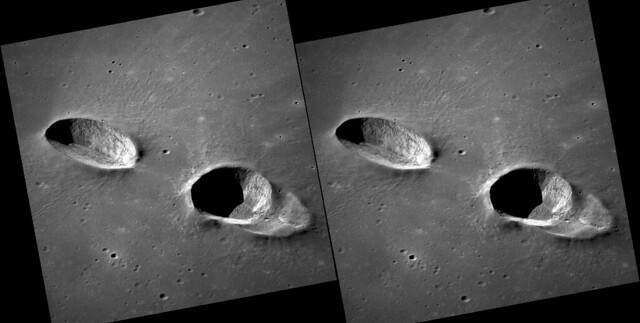Hated wrote: It is the impact on the right that has an obviously newer single smaller near vertical impact.
hated,
I hope you followed up the links I posted for you above, on the incident angle of impactors, points that were kindly confirmed by Chris.
Al hypervelocity impact craters are circulaer, until the angle of incidence is less than about 10 degrees.
Thus, an explantion that involves the Messiers being simultaneous could be that the oval crater was a smaller fragment.
However, I refreshed my memory by referring to an excellent book, Planetary Geology, a collection of black and white photographs taken by probes and telescopes before 1979, with discussions by a group of that included the late Prof.John Guest of UCL, Prof.Paul Butterworth, now of Washington State U., Dr.John Murray of the Open University and William O'Donnel, now I think at Raytheon Labs, Santa Barbara. I reference the authors as this is an obscure book, not a paper. Their discussion of Messier concludes by saying that "double and multiple craters have been produced in the laboratory by impacting projectiles into sand at angles from 2
o to 7
o from the horizontal".
I can't find a reference to such lab.studies, but this paper
http://articles.adsabs.harvard.edu//ful ... 1.000.html says "On planets without significant atmospheres, this change [retention of energy by the impactor] in enregy partitioning at very low angles (<10
o) is expressed by downrange ricochet impacts ("sibling" craters) that increase in distance from the primary with decreasing impact angle." This statement is backed by a reference, Schultz PH , Gault DE. (1991) Lunar & Planet.SCi XXII, 1195-1196, which is a conference proceedings book, not avalable online.
The Ames Vertical Gun Range could be a source for such studies, but I read that it could not fire at an angle less than 15
o, so there may be no data for angle as low as we would wish.
This page shows a strikingly similar crater to Messier, on Mars but without a 'sibling' crater:
http://cintos.org/SaginawManifold/Obliq ... index.html
and you may like to compare with the lunar crater caused by crashing a Saturn IVB booster into the Moon, at an oblique angle:
http://www.nasa.gov/mission_pages/LRO/m ... 4sivb.html
The booster did not 'skip' across the moon's surface.
John
PS If you want a really ENORMOUS elongated crater, try Orcus Patera on Mars, 130kms long. Good picture from ESA at
http://www.esa.int/Our_Activities/Space ... ted_crater
and if APOD posted that, we could have a good argument about origins. My bet is it's a crater chain. J.
 Messier Craters in Stereo
Messier Craters in Stereo

